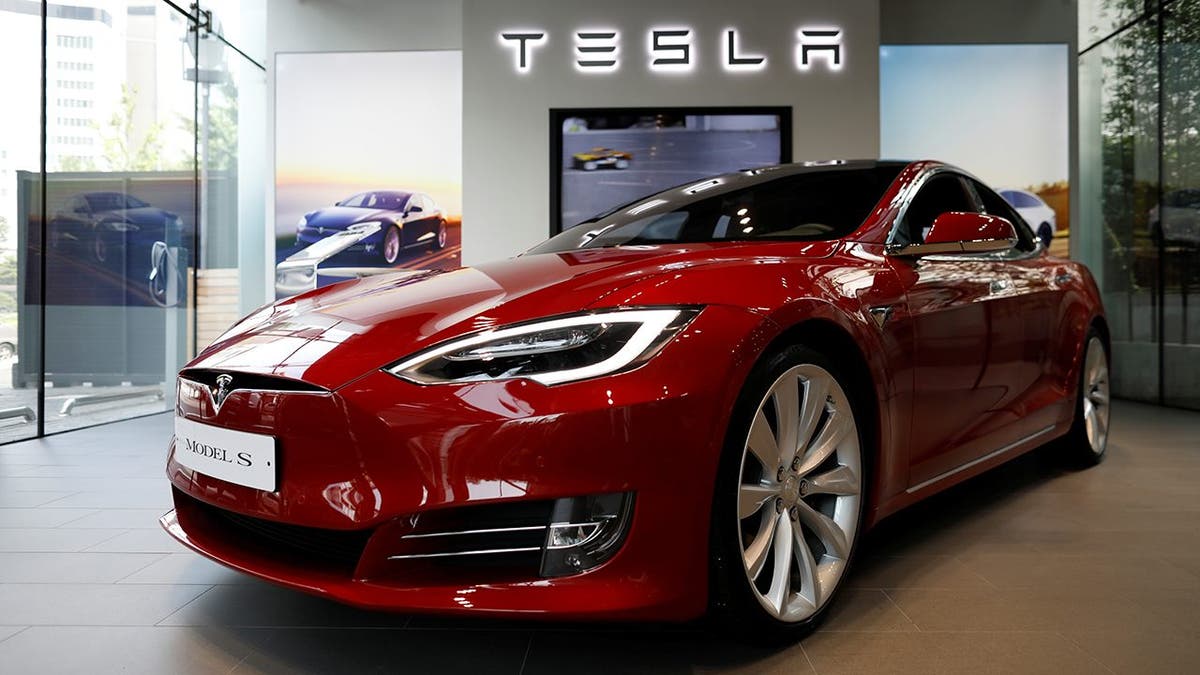
A Tesla Model S electric car is seen at its dealership in Seoul, South Korea July 6, 2017. REUTERS/Kim Hong-Ji - RTX3A8QE (REUTERS)
The Tesla vehicle involved in a fatal crash last month in Northern California was operating on Autopilot, the automaker has confirmed. But Tesla contends that the victim and a damaged freeway barrier share in the blame.
The Model X SUV crashed in Mountain View, in California’s Silicon Valley, on March 23, killing its driver, Apple engineer Walter Huang, 38.
The electric car maker said in a company blog post that the driver did not have his hands on the steering wheel for six seconds before the crash, despite several warnings from the vehicle.
Tesla tells drivers that although its Autopilot system can keep speed, change lanes and self-park, it requires drivers to keep their eyes on the road and hands on the wheel in order to take control of the vehicle and avoid accidents.
Tesla said its vehicle logs show the driver took no action to stop the car from crashing into a concrete lane divider.
Photos of the SUV show that the front of the vehicle was demolished, with its hood ripped off and front wheels scattered on the freeway.
The vehicle also caught fire, though Tesla said no one was in the vehicle when that happened.
Tesla also attributed the exacerbation of the crash to a missing or damaged safety shield on the end of the freeway barrier.
“The reason this crash was so severe is because the crash attenuator, a highway safety barrier which is designed to reduce the impact into a concrete lane divider, had been crushed in a prior accident without being replaced,” Tesla said.
“The reason this crash was so severe is because the crash attenuator, a highway safety barrier ... had been crushed in a prior accident without being replaced.”
In the last paragraph of its blog post, the company said: “None of this changes how devastating an event like this is or how much we feel for our customer’s family and friends.”
Huang's family told KGO-TV in the Bay Area that Huang had taken the vehicle into the Tesla dealership complaining about problems with Autopilot before the fatal crash, Ars Technica reported.
However, Tesla reportedly said it could not find any record of Huang's complaints.
Tesla defended its Autopilot feature, saying that while it doesn’t prevent all accidents, it makes them less likely to occur than vehicles without it.
“No one knows about the accidents that didn’t happen, only the ones that did,” the car company said. “Over a year ago, our first iteration of Autopilot was found by the U.S. government to reduce crash rates by as much as 40%.”
Federal investigators are looking into last month’s crash, as well a separate crash in January of a Tesla Model S that may have been operating under the Autopilot system.
The National Transportation Safety Board said it also plans to study the fire that resulted from the crash to learn how to best contain battery fires and safely remove a vehicle from the roadway after an accident, Ars Technica reported.
Earlier this month, a self-driving Volvo SUV being tested by Uber struck and killed a pedestrian in Arizona. Arizona Gov. Doug Ducey consequently suspended the ride-hailing service from testing autonomous vehicles in the state.
The Associated Press contributed to this report.
